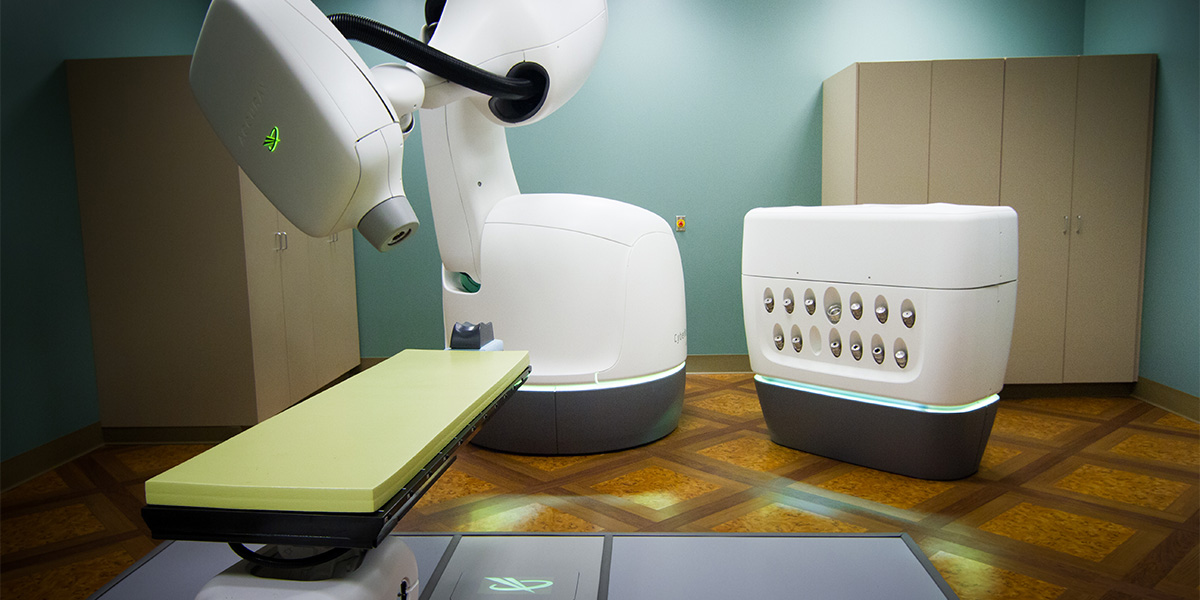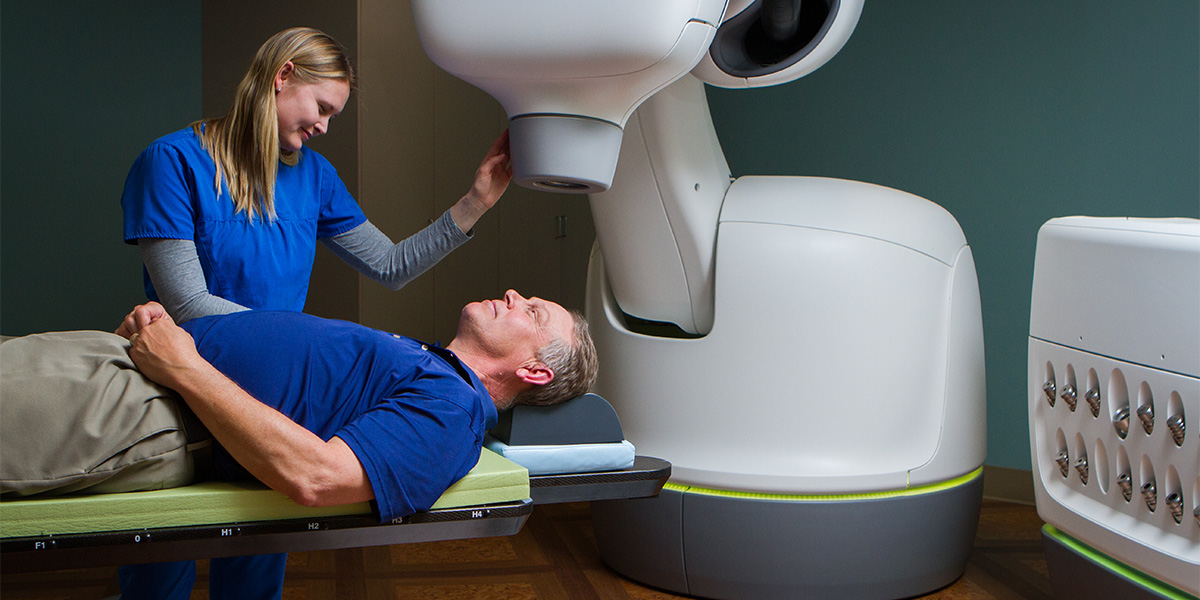
About SpaceOAR
Prostate Cancer Innovation at Gibbs Cancer Center & Research Institute
Did you know that prostate cancer is second only to skin cancer as the most frequently diagnosed cancer in men? While radiation therapy is among the most effective and common forms of treatment for prostate cancer, it can sometimes cause undesirable side effects due to the prostate’s close proximity to other delicate tissues.
As part of our commitment to provide exceptional patient care, Gibbs Cancer Center & Research Institute was first in the Carolinas — and one of the first cancer centers in the United States — to introduce the SpaceOAR® System. SpaceOAR is the first FDA-approved method for placing a “spacer” to protect the rectum of men undergoing prostate cancer radiation treatment.
Improving Outcomes for Prostate Cancer Patients
The ultimate goal of any type of radiation therapy is to maximize radiation to the tumor while avoiding or minimizing radiation to the surrounding, healthy tissue. This can be especially challenging for prostate cancer patients undergoing radiation therapy because the prostate and rectum are located close together.
Due to their close proximity, the rectum can be at risk for radiation exposure during prostate cancer radiation treatment. Side effects can include diarrhea, the inability to control bowel movements and rectal bleeding.
Rectal radiation exposure can also limit a radiation oncologist’s ability to deliver high doses of radiation to the prostate. The SpaceOAR System substantially reduces that obstacle, allowing our doctors to deliver higher doses of radiation to more safely and effectively treat prostate cancer.
What is SpaceOAR?
SpaceOAR consists of a water-based gel that is injected into the space between the prostate and the rectum as a liquid. It quickly expands and solidifies into a soft gel, creating a spacer that painlessly and temporarily moves the prostate away from the rectum. This allows direct delivery of radiation to the prostate while reducing the radiation dose to the rectal area.
The simple procedure is done in an operating room at the same time radiation markers are placed in the prostate. The gel spacer eventually liquefies and is eliminated from the body in the patient’s urine. Most patients report that they have little or no discomfort from the procedure, and cannot feel the spacer at all.
SpaceOAR National Education & Resource Center
As a SpaceOAR National Education & Resource Center, we lend our expertise on a national level to other physicians and cancer facilities. Dan Fried, MD, medical director and radiation oncologist at Gibbs Cancer Center & Research Institute-Pelham, was the first trained and certified physician in the Carolinas to use SpaceOAR. He is also one of the top 10 SpaceOAR providers in the United States.
As a designated education site for SpaceOAR, physicians from across the U.S. visit Dr. Fried and his staff at Gibbs to gain knowledge about utilizing SpaceOAR for their prostate cancer patients.
SpaceOAR & CyberKnife
Gibbs Cancer Center & Research Institute is also the first cancer facility in the United States to combine SpaceOAR technology with the CyberKnife M6 Robotic Radiosurgery System for the treatment of low-risk and favorable intermediate-risk prostate cancer patients. For appropriate patients, CyberKnife can safely reduce prostate cancer radiation therapy from the standard of 45 treatments down to just five treatments.













